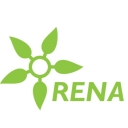Chemicals
Chemicals are an essential component of our daily lives, but some chemicals can severely
damage our health or the environment. There is an increase in health problems that can be
partially explained by the use of chemicals. Some man-made chemicals are found in the most
remote places in the environment but also in our bodies.
Regulation on Registration, Evaluation, Authorisation and Restriction of Chemicals (REACH - EC
No 1907/2006) entered into force in 2007. It streamlines and improves the former legislative
framework on chemicals of the European Union (EU).The main aims of REACH are to ensure a
high level of protection of human health and the environment from the risks that can be posed
by chemicals, the promotion of alternative test methods, the free circulation of substances on
the internal market and enhancing competitiveness and innovation.
REACH makes industry responsible for assessing and managing the risks posed by chemicals and
providing appropriate safety information to their users. In parallel, the European Union can take
additional measures on highly dangerous substances, where there is a need for complementing
action at EU level.
REACH is complemented by the new Regulation for Classification, Labeling and Packaging of
Substances and Mixtures (CLP Regulation, (EC) No 1272/2008, entered into force on 20 January
2009). The Regulation incorporates the classification criteria and labeling rules agreed at UN
level, the Globally Harmonized System of Classification and Labeling of Chemicals (GHS). The
Regulation requires companies to classify, label and package appropriately their hazardous
chemicals before placing them on the market. It aims to protect workers, consumers and the
environment by means of labelling which reflects possible hazardous effects of dangerous
substances.
Industrial Emissions Directive (IED - Directive 2010/75/EU) is the successor of the IPPC Directive
and in essence, it is focused on minimising pollution from various industrial sources throughout
the European Union. Operators of industrial installations operating activities covered by Annex I
of the IED are required to obtain an integrated permit from the authorities in the EU countries.
About 50.000 installations were covered by the IPPC Directive and the IED will cover some
new activities which could mean the number of installations rising slightly. The IED is based
on several principles, namely (1) an integrated approach, (2) best available techniques, (3)
flexibility, (4) inspections and (5) public participation.
The REACH and CLP regulations, interlinked amongst other with the Industrial Emissions
Directive (IED), are covering major chapters of chemicals legislation and industrial pollution
control.
Most of the ECRAN beneficiary countries are at different level when it comes to transposition of
the industrial emissions/chemicals related EU acquis. Additional efforts are required in the area
of implementation. Since this area was only partially covered by the Regional Environmental
Accession Network (RENA), the activities implemented under this working group are focused
on the required capacity building and strengthening of the existing administrative structures
for proper transposition, implementation and enforcement of the related directives and
regulations.
The training program of this Working group is closely coordinated with the one designed under
ECENA Working group in order to avoid duplication and overlaps.


